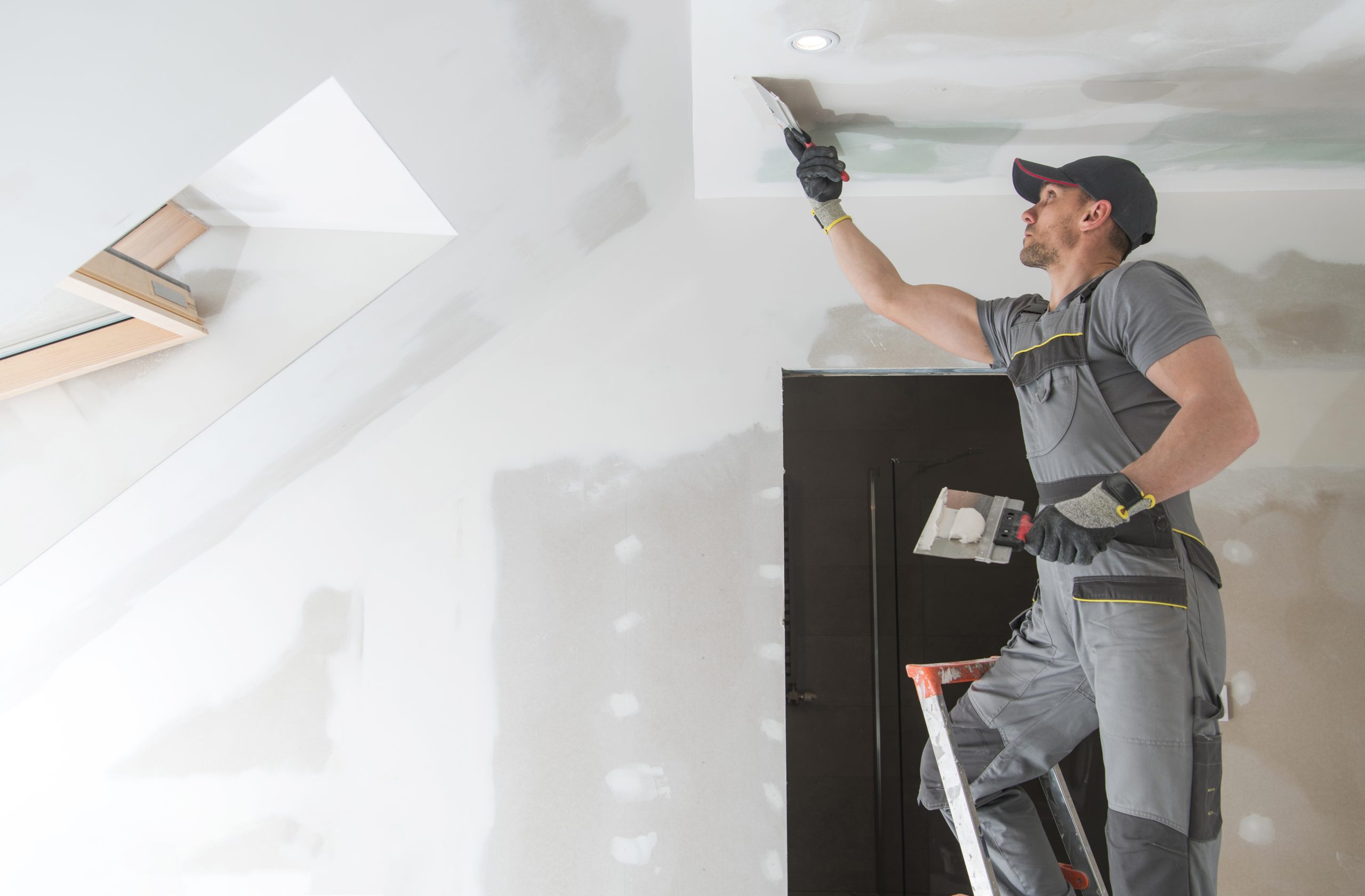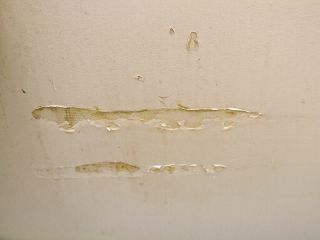Crucial Tips for Effective Drywall Fixing and Setup Methods
Reliable drywall repair service and installation calls for a cautious approach. Understanding the sorts of drywall and having the right devices is important. Accurate measurements and appropriate techniques can considerably influence the outcome. Numerous neglect essential steps like taping and fining sand, which can make or damage the last appearance. As jobs advance, common difficulties might arise that require focus. Exploring these suggestions can cause an extra successful and refined coating.
Recognizing Different Kinds Of Drywall
Comprehending the various kinds of drywall is vital for any kind of effective repair work or installment project. Drywall, frequently referred to as gypsum board, can be found in a number of varieties tailored for particular applications. Requirement drywall is one of the most extensively utilized type, ideal for general interior wall surfaces and ceilings. Moisture-resistant drywall, commonly green in shade, is made for areas prone to humidity, such as shower rooms and kitchens. Fireproof drywall, usually tinted pink or purple, is crafted to withstand greater temperatures and is frequently made use of in garages or near heaters. In addition, soundproof drywall helps lower sound transmission, making it ideal for multi-family homes or taping studios. Specialty drywall, like cement board, is made use of in damp locations like showers or bathtub surrounds. Recognizing these kinds aids in selecting the best material for every project, making certain durability and efficiency out of commission or new installations.
Crucial Tools for Drywall Repair and Installment
Having the right tools is important for effective drywall fixing and installation. A quality energy knife is critical for cutting drywall sheets precisely. A drywall T-square helps guarantee straight sides, while a taping blade is needed for using joint substance smoothly over joints. In addition, a drywall saw allows for removing harmed areas or suitable drywall around components.
For hanging drywall, a power drill with drywall screws is indispensable, as it makes it possible for secure and fast installation. A level is additionally important to verify that the drywall is straight and correctly straightened. Once it has dried out, a fining sand block or pole sander is vital for smoothing out joint compound. Lastly, a determining tape is essential for precise dimensions, stopping waste and making certain a correct fit. Outfitted with these devices, individuals can tackle drywall jobs efficiently, causing professional-looking outcomes.
Step-by-Step Guide to Fixing Holes and Cracks
When resolving openings and cracks in drywall, having the right tools and materials is important for a successful repair. This guide details the essential items and gives a clear, step-by-step process to properly restore the surface area. Recognizing these elements will help assure a smooth finish and resilient outcomes.
Devices and Materials Needed
A well-equipped toolkit is essential for reliable drywall repair and setup. Trick devices include an energy blade for cutting drywall, a tape procedure to guarantee accurate sizing, and a drywall saw for bigger openings. A putty blade is vital for using joint compound smoothly, while a fining sand block or pole sander aids accomplish a seamless coating. For patching, a roll of fiberglass mesh tape or paper tape is needed to strengthen joints. Additionally, a drill and screws are needed for securing new drywall items. Important materials include joint substance, primer, and paint to complete the repair service. Having these devices and materials handy ensures a smoother, extra effective repair work procedure, producing professional-looking outcomes.
Repair Process Actions
Repairing holes and fractures in drywall calls for a systematic technique to guarantee a seamless finish. Initially, the area surrounding the damages ought to be cleansed completely to get rid of dust and debris. Next off, for small splits, a putty knife is made use of to use a joint substance evenly over the location. For larger holes, a patch is needed; the harmed area is eliminated, and a new item of drywall is fitted in area, safeguarded with screws. When the patch remains in position, joint compound is put on mix the sides. After drying, fining sand the area smooth is important. The fixed surface area needs to be primed and repainted to match the bordering wall surface, guaranteeing a low-profile repair work.
Strategies for Putting Up Drywall Panels
Mounting drywall panels requires mindful preparation and exact implementation to ensure a specialist and smooth finish. It is vital to gauge this page the wall space accurately and cut the this link panels to fit, guaranteeing that they straighten with the studs. Placing the panels horizontally is normally suggested, as this can boost the structural integrity and lower the number of joints.
Utilizing drywall screws, installers should protect the panels every 16 inches along the studs, making certain a firm hold. It is important to stay clear of overdriving the screws, which can harm the paper surface. For edges and sides, making use of an energy blade enables clean cuts and a snug fit.

Ending Up Touches: Taping, Mudding, and Sanding
Once the drywall panels are firmly in position, the next important action involves the complements of taping, mudding, and sanding. Insulation is essential for creating a seamless shift in between panels and hiding joints. A top quality drywall tape, either paper or fiberglass fit together, should be applied over the joints, ensuring it sticks effectively to the mud that will certainly be used next.
Mudding, or applying joint compound, adheres to the taping procedure. This substance fills gaps and ravel the surface area. A first coat should be applied generously, feathering the edges to mix with the drywall. After the first layer dries, subsequent layers may be needed for a flawless finish.
Lastly, fining sand is needed to achieve a smooth surface area. A fine-grit sandpaper needs to be utilized to gently ravel any flaws. Care should be required to prevent over-sanding, which can harm the drywall - drywall contractor. Appropriately implemented, these completing touches develop an expert look ready for painting
Tips for Preserving Your Drywall After Setup
Keeping drywall after setup is important to protecting its appearance and architectural honesty. Normal cleansing is essential; dirt and dust can build up, so mild cleaning with a moist towel is suggested. Home owners must likewise evaluate for any kind of indications of moisture or mold, specifically in high-humidity areas like bathrooms and kitchen areas. If any type of damage occurs, it is very important to resolve it quickly to stop more problems.
Utilizing furniture pads can help avoid scrapes or damages from hefty items. Additionally, painting the drywall with a top quality, cleanable paint supplies an additional layer of defense and makes future cleaning easier. Prevent Get More Info making use of rough cleansers or devices, as these can harm the surface area. Preserving a steady indoor climate with suitable moisture levels will assist stop buckling or breaking over time. By complying with these suggestions, one can assure that drywall continues to be in excellent problem for years to find.
Frequently Asked Questions
For How Long Does Drywall Require To Totally Dry After Installation?

Can I Mount Drywall Over Existing Drywall?
Yes, drywall can be mounted over existing drywall, yet it is essential to ensure the underlying surface area is secure and properly prepared. This approach can enhance insulation and decrease installation time, though it may include weight.
What Is the Ideal Means to Soundproof Drywall?
The very best means to soundproof drywall includes using specialized soundproofing materials, such as resilient networks, acoustic caulk, and sound-dampening drywall. These strategies efficiently decrease sound transmission in between areas, boosting overall acoustic efficiency in living spaces.
Just how Do I Select the Right Drywall Density?
To pick the ideal drywall density, take into consideration the application and place. Requirement domestic wall surfaces usually utilize 1/2 inch, while ceilings or specialized areas may call for 5/8 inch for additional strength and soundproofing capabilities.
Exist Eco-Friendly Drywall Options Available?
Yes, environmentally friendly drywall options are available. These include products made from recycled materials, gypsum boards with reduced unpredictable natural substances (VOCs), and those making use of lasting manufacturing processes, providing environmentally-conscious options for building and renovation jobs.
Having the right tools is necessary for effective drywall repair work and setup. For hanging drywall, a power drill with drywall screws is important, as it makes it possible for safe and secure and quick installation. Key tools consist of an utility blade for reducing drywall, a tape action to guarantee precise sizing, and a drywall saw for larger holes. Yes, drywall can be mounted over existing drywall, however it is crucial to ensure the underlying surface area is safe and secure and properly prepared. The best method to soundproof drywall entails utilizing specialized soundproofing materials, such as durable channels, acoustic caulk, and sound-dampening drywall.